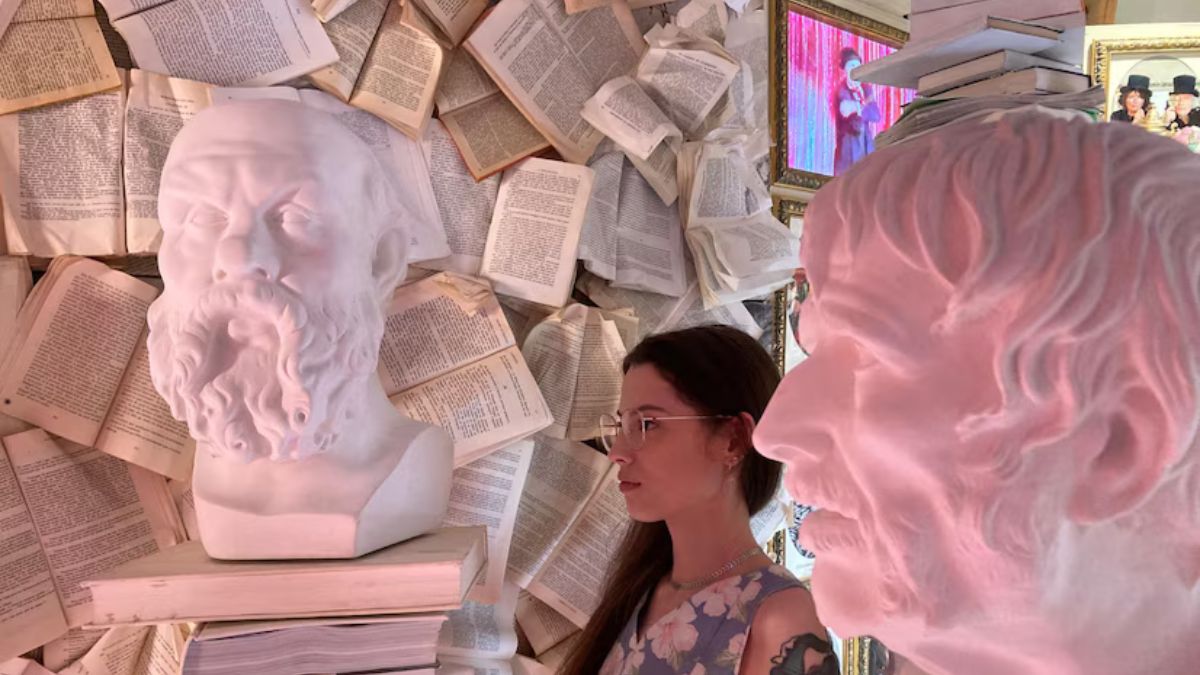Art has always been an essential part of human civilization, acting as a mirror to the culture, values, and technology of its time. Among the many art forms that have been passed down through the ages, Ancient Artz stands out as a vibrant and multifaceted category that reveals a lot about the early societies. From the cave paintings of the Paleolithic era to the intricate sculptures and pottery of ancient civilizations, Ancient Artz provides us with a rich history of human expression. This article delves into the world of Ancient Artz, exploring its various forms, techniques, and the role it played in different cultures.
What Is Ancient Artz?
Ancient Artz refers to the traditional art forms created by ancient civilizations, which have been preserved through history and serve as a window into the past. These art forms include cave paintings, pottery, sculptures, murals, and more, created using materials and techniques that were available at the time. The term “Artz” is a variation of the word “art” that highlights the timeless and universal nature of artistic expression across various ancient cultures.
The significance of Ancient Artz lies not just in its aesthetic value, but also in its ability to communicate historical events, cultural practices, and religious beliefs. By studying these works of art, we can learn about the beliefs, lifestyles, and technological advances of ancient societies.
The Importance of Ancient Artz in History
Ancient Artz serves as a historical record, capturing the essence of past cultures long before written language became widespread. For example, ancient Egyptian art, with its distinctive style and symbolism, helps us understand their views on life, death, and the afterlife. Similarly, the art of the ancient Greeks and Romans reflects their values of beauty, humanism, and the quest for perfection. These works of art, whether they are murals, sculptures, or pottery, provide a tangible connection to the distant past, offering insight into the thoughts and experiences of ancient peoples.
Furthermore, Ancient Artz has influenced the development of art in later civilizations. Many modern art movements, from the Renaissance to contemporary abstract art. Owe a great deal to the techniques and concepts developed by ancient artists.
Types of Ancient Artz
Cave Paintings
One of the earliest forms of Ancient Artz is cave painting, which dates back to the Paleolithic period. These paintings, found in caves across the world, depict animals, human figures, and abstract symbols. The most famous examples are the cave paintings of Lascaux in France, which are estimated to be around 17,000 years old. These paintings are believed to have had spiritual or ritualistic significance, possibly related to hunting magic or religious beliefs.
Pottery and Ceramics
Pottery is another crucial form of Ancient Artz, and it was a primary method for both functional and artistic expression in many ancient cultures. Ancient pottery from cultures like the Greeks, Romans, and Chinese not only served as utilitarian vessels but also as canvases for intricate designs. The distinctive patterns and shapes on pottery often tell us about the cultural and social practices of the time, from religious rituals to daily life.
Sculptures and Statues
Sculpture played a significant role in Ancient Artz across many civilizations. The ancient Egyptians, for example, created monumental statues of gods, pharaohs, and animals, which were intended to convey power and divinity. In ancient Greece, sculptors like Phidias developed highly realistic representations of the human body, which were celebrated for their beauty and perfection. Roman sculptors, too, mastered the art of creating lifelike busts of emperors and public figures.
Mosaics and Murals
Mosaics and murals were another important form of ancient art. The Romans, in particular, were known for their detailed floor mosaics, which depicted everything from daily life to mythological scenes. Similarly, ancient Egyptian tombs and temples were often decorated with vibrant murals that told stories about the gods and the afterlife. These works were designed not only for beauty but also for conveying important messages to future generations.
Textiles and Clothing
In addition to traditional media like stone and clay, ancient societies also expressed their artistic creativity through textiles. The intricate patterns found in ancient clothing and fabrics from cultures such as the Mayans and the Chinese offer us a glimpse into their aesthetic values and daily life. Textiles were used in both practical and ceremonial contexts, showcasing the cultural importance of this art form.
Ancient Artz Across Different Civilizations
Ancient Egyptian Art
Ancient Egypt is one of the most well-known sources of Ancient Artz. The Egyptians created art that was deeply symbolic, with strict conventions about how gods, pharaohs, and everyday people should be depicted. Egyptian art is known for its use of bold lines, bright colors, and a focus on order and harmony. One of the most famous examples of Egyptian art is the Great Pyramids of Giza, which not only served as tombs but also as monumental works of art meant to honor the gods and pharaohs.
Ancient Greek Art
Greek art is renowned for its idealized representations of the human form. The Greeks introduced new techniques in sculpture, particularly the use of contrapposto, a stance that made their statues appear more lifelike. Greek art also influenced Western art traditions, and its focus on proportion. Balance, and symmetry has shaped artistic principles for centuries.
Ancient Roman Art
Roman art is often seen as a continuation of Greek art, though the Romans were more focused on realism. Roman sculpture, especially portraiture, aimed to capture the individual’s true likeness, reflecting the importance of personal identity in Roman society. Additionally, Roman architecture, such as the Colosseum and aqueducts. Demonstrates a mastery of engineering that was as much an art as a science.
Ancient Chinese Art
Chinese art, which dates back thousands of years, is known for its delicate brushwork, intricate designs, and symbolic use of color. The art of ancient China was heavily influenced by philosophical traditions such as Confucianism and Daoism. And much of it was created to serve religious or ceremonial purposes. Chinese art includes a wide variety of mediums, including painting, calligraphy, sculpture, and ceramics.
Ancient Mayan and Aztec Art
In Mesoamerica, the Mayans and Aztecs created impressive works of art that often had religious significance. The Mayans were known for their intricate stone carvings and pottery, while the Aztecs created large-scale sculptures and murals. Both cultures used art to tell stories about their gods and rituals, and these works continue to captivate scholars and art enthusiasts today.
The Techniques and Materials of Ancient Artz
Ancient artists had to work with the materials available to them at the time. And their creative solutions to these limitations offer a fascinating glimpse into their ingenuity. Common materials included stone, clay, bronze, and wood. Artists would often use tools made from bone, metal, or stone to carve and shape their creations.
The techniques varied greatly depending on the civilization. For example, the Egyptians used a technique called “low relief” in their sculptures. Where figures were carved into the stone but remained attached to the background. In contrast, Greek sculptors achieved high reliefs. Where figures were almost entirely detached from the stone, giving them a sense of three-dimensionality.
The Influence of Ancient Artz on Modern Art
Although ancient art was created centuries ago, its influence on modern art remains profound. The Greeks and Romans set the foundation for Western art traditions, which emphasize proportion, perspective, and humanism. In the Renaissance, artists like Leonardo da Vinci and Michelangelo looked to ancient works for inspiration, reviving classical techniques and ideals. Today, many contemporary artists continue to draw upon the themes and techniques of Ancient Artz as a way to connect with the past and explore timeless ideas.
Conclusion
Ancient Artz is a vast and intricate category of art that spans multiple civilizations and artistic traditions. Through pottery, sculpture, cave paintings, and more, ancient artists were able to communicate stories. Beliefs, and customs that continue to shape our understanding of the world. By studying these ancient artworks, we not only gain a deeper appreciation for the creativity and skill of past civilizations but also witness the timelessness of human expression.
ALSO READ:SpeedyShort.com: The Ultimate Platform for Fast and Efficient URL Shortening
FAQs
What is Ancient Artz?
Ancient Artz refers to the art created by ancient civilizations, including cave paintings. Sculptures, pottery, and murals, that reflects their cultural, religious, and social beliefs.
Why is Ancient Artz important?
Ancient Artz provides valuable insight into the history, values, and beliefs of past societies. Allowing us to understand how humans expressed themselves long before written language became widespread.
What are some famous examples of Ancient Artz?
Famous examples of Ancient Artz include the cave paintings of Lascaux. Egyptian tomb art, Greek sculptures like the Venus de Milo, and Roman mosaics.
How did ancient artists create their works?
Ancient artists used materials like stone, clay, metal, and wood. Employing various techniques such as relief carving, painting, and molding to create their works.
How has Ancient Artz influenced modern art?
Ancient Artz laid the foundation for many artistic traditions, particularly in the Western world. Modern artists continue to draw inspiration from the styles, techniques, and themes of ancient cultures.







